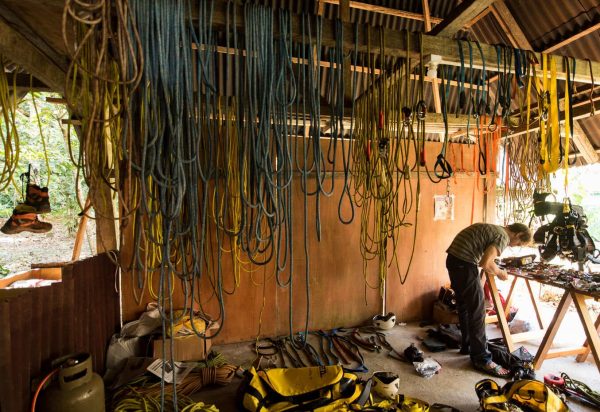The selection of a tree species, and of an individual representative of that species, is inevitably a matter of compromise. Of course, we looked for trees that were old, large and full of epiphytes among the tree species characteristic of the surrounding forest, but other choice criteria also had to be taken into account. In particular, accessibility, which determines the working time that can be devoted to collecting each day and therefore the time needed to complete the inventory of a tree.
After several reconnaissance missions in Peru and Colombia, our first choice was an enormous specimen of Dussia tessmannii (50m high) located at an altitude of 400m in a foothill forest in the Andes mountain range, in the Rio Abiseo National Park in Peru. After this study on a tree at low altitude, we wanted to obtain a picture of the biodiversity associated with a tree located at a higher altitude, where the diversity in epiphytic plants is considered to be maximum in the scientific literature. Following a meeting with Dr. Damien Catchpole, holder of the record for the number of epiphytes found in a tree, and a visit to Yanachaga-Chemillén National Park, we selected the tree inventoried by Catchpole in 2003 to serve as the second study subject for the Life On Trees programme. The tree, a 32m tall individual of Ficus americana subsp. andicola, is located 2450m above sea level in the San Alberto Valley in Peru. The third tree in the programme is situated at an intermediate altitude, 850m, in the forest of the La Isla Escondida private reserve in the department of Putumayo in Colombia. The tree is a 40m specimen of the Brosimum utile species.















